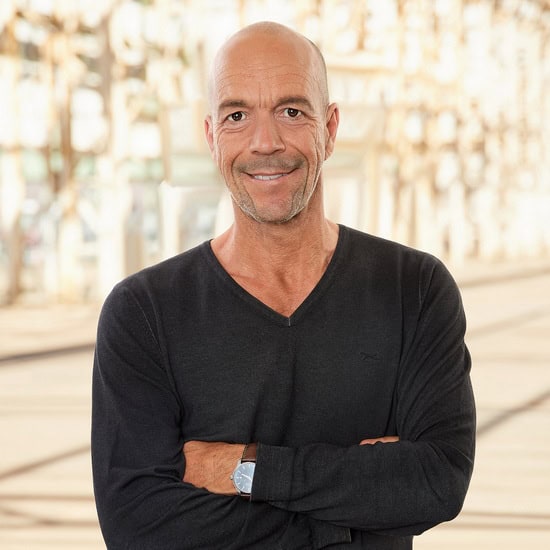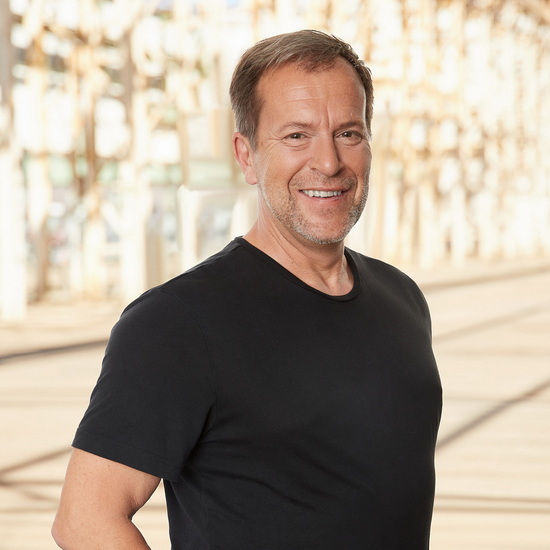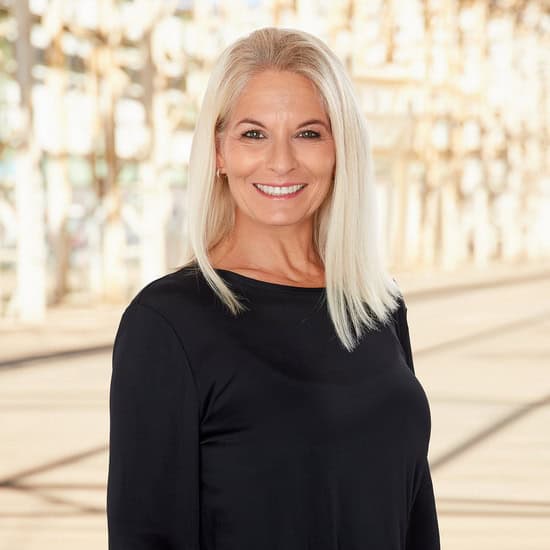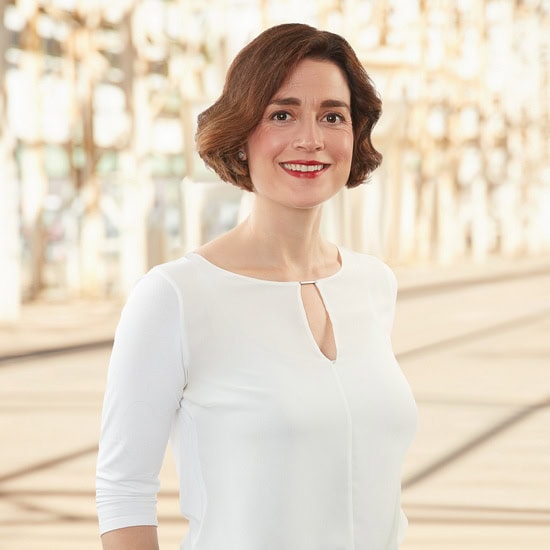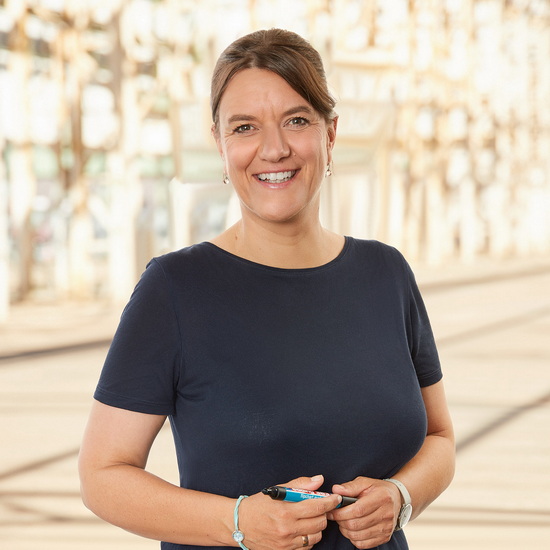What leadership personalities are there? Why does one lead like this, the other like that? What is behind it?
What are the advantages and disadvantages of different leadership personalities?
Leadership personality
Definition of leadership personality:
A leader is someone who has the skills and qualities needed to lead, motivate and empower others to achieve common goals.
Leadership and personality
After looking at the different leadership styles in our last article, we now want to talk about leadership personalities.
Of course, the question arises as to whether it is realistic to categorize people into a few personality types. Right up front: No, it’s not! People are complex beings, so a few drawers are not enough.
So why are we writing about leaders in this article?
Leadership personality and values
We refer to the work of the American psychologist Clare W. Graves. These are also known as GVS (Graves Value System) or Spiral Dynamics.
In the last century, Graves worked out what is really important to people. The basis for this are values that motivate people to act, judge, live and decide in a certain way.
Graves has defined eight different value clusters, which he calls memes. Each meme consists of different values and attitudes and describes a resulting world view and way of thinking. We will briefly introduce you to the different memes (value systems) here and later go into great detail about the influence these attitudes can have on leadership personalities and leadership behavior.

Overview of memes according to Graves
-
Beige meme:
-
Survival instinct
- Primitive instinct
- Basic needs
-
-
Purple meme:
-
Magical-mythical thinking
- Tribal consciousness
- Ritual and ceremony
-
-
Red meme:
-
Self-centered
- Power and control
- Dominance behavior
-
-
Blue meme:
-
Authority and hierarchy
- Rules and order
- Tradition and duty
-
-
Orange meme:
-
Individual target achievement
-
Success and prosperity
-
Competition
-
6. green meme:
-
-
Egalitarianism
-
Community and harmony
-
Environmental awareness
-
7. yellow meme:
-
-
Systemic thinking
-
Flexibility and customization
-
Holistic solutions
-
8. turquoise meme:
-
-
Transcendence
-
Global awareness
-
Ethics and spirituality
-
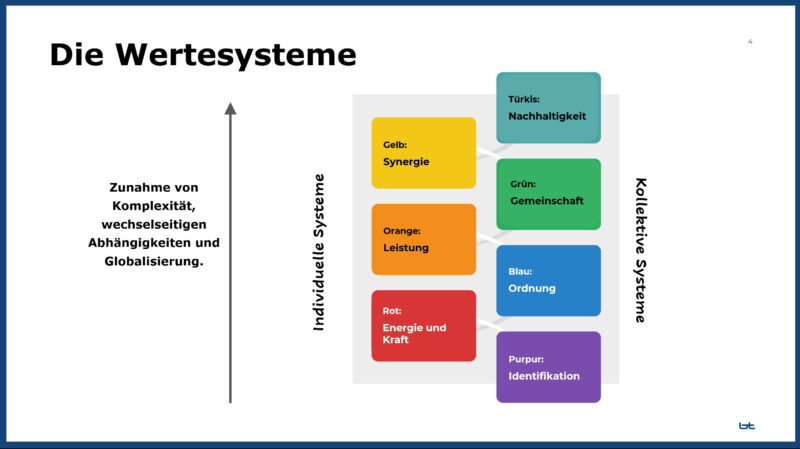
Background knowledge on Graves and Spiral Dynamics
We have already written many articles on the subject of values and Graves. So if you want to read up a little more background knowledge, we recommend the following articles:
What is a leader?
A leader is characterized by the ability to inspire and motivate people to achieve common goals.
Leaders are able to develop clear visions, lead their teams towards them and utilize the individual strengths of the team members. In our culture, a successful leader does not act in an authoritarian manner, but relies on cooperation, communication and promoting the personal development of their team members.
What qualities should a leader have?
A good manager should first of all be personally stable, stress-resistant and have a high level of self-motivation and self-esteem. People who are at peace with themselves are better able to act calmly in interactions with others and act constructively in conflicts. Leaders should be empathetic, have good communication skills, show decisiveness, promote teamwork, be authentic, have problem-solving skills and the ability to self-reflect. A sense of humor, assertiveness and a positive attitude are also important qualities. At least that is the case today. Just 20 or even 30 years ago, leadership was valued differently and managers were expected to have different skills: Much less attention was paid to the needs and sensitivities of employees, and there were clear command and control structures. You can find the exciting history of leadership styles in our article Leadership styles – the big overview.
Just as there are different perceptions of what a good leader should bring to the table, there are of course also people for whom one type of leadership suits them better than the other.
Background knowledge on leadership and leadership personalities
There is an incredible amount to say and write about leadership and leadership personalities. That’s why we’ve listed some of our articles on the subject here so that you can do more research:

Leadership personalities according to Spiral Dynamics
According to Spiral Dynamics, people have different values and therefore different levels of importance. For example, one leader may prioritize consensus and team orientation, whereas another may value entrepreneurial thinking and performance orientation much more highly. The different leadership personalities behave according to this weighting of values. In the following, we will take a look at how the value clusters identified by Graves affect the actions of leaders.
It should also be mentioned that the Graves Value Model – as described above – originally describes a total of eight different memes. The first values meme is all about survival. As this is thankfully not the case in companies, we only show seven out of eight memes here and leave out the first (the beige) meme.
Leaders
Of course, people and groups do not exist exclusively as purple, red or blue-oriented people. Every person combines parts from different value clusters.
Nevertheless, it could be instructive to work out a prototype, a persona, for each meme category. Let’s imagine what unadulterated leadership would look like if it were represented exclusively by a specific meme. And now: let’s explore what leadership might look like in its purest form with these different memes!

The 7 leadership personalities and their values
So that you get a feel for the values of the prevailing meme,
-
let us first describe the basic features of the meme.
-
We then transfer the values to the corporate context.
-
And then bring the value memes to life using the “persona” of a leader. You can find out what a persona is and how to work with it here
Have fun!
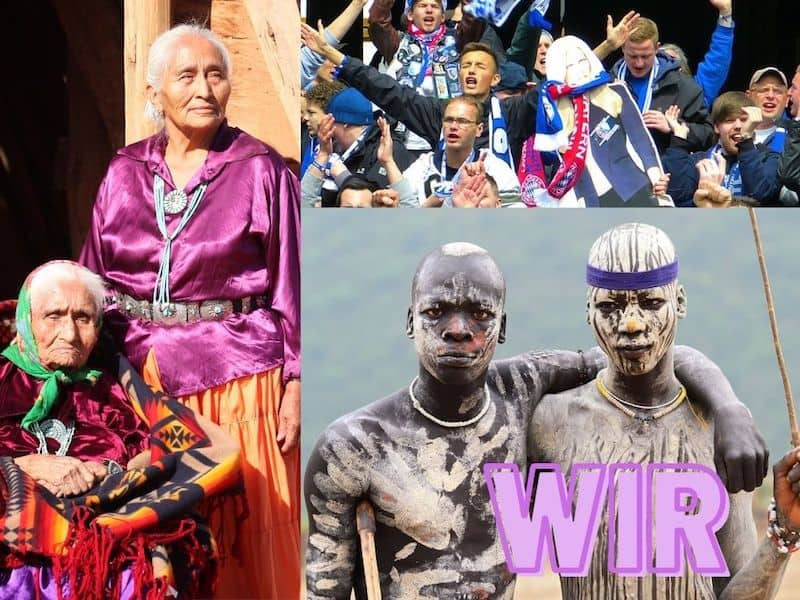
1. the purple meme – belonging to the group
In Spiral Dynamics according to Clare W. Graves, the purple meme represents the first stage of human consciousness development, which follows the bare survival of the beige meme. This meme has existed for a very long time and was born at a time when people still lived together in tribal structures. These values are characterized by a strong group identity and a deep need for security and togetherness. Here are some characteristics of the purple meme:
-
Tribalism:
In the purple phase, the focus is on the community. People identify strongly with their tribe or group (family, company, soccer club, etc.) and draw protection and security from the community. -
Magical thinking:
Purple’s thinking is characterized by a magical understanding of the world. There is a belief in supernatural powers and rituals that are supposed to bring protection and prosperity. -
Rituals and symbols:
Rituals and symbols play an important role in strengthening group affiliation and celebrating shared values. This can also give rise to taboos and myths. -
Instinctive hierarchies:
Within the tribe there are often informal, instinctive hierarchies based on personal qualities or experience. However, there is little formal structure. -
Fear of the unknown:
Change or the unknown can trigger fears. Purple is based on the tried and tested to ensure safety.
The purple meme emphasizes strong group togetherness through ritual practices, simple hierarchies and security to cope with existential fears. The individual subordinates himself completely to the group and the leader and does not represent his own opinion or position.
Even though tribal rather than corporate structures prevailed at the time this meme was created, we still find the purple value system in small (predominantly family) companies today, where there is a dominant head who is not questioned.

Characteristics of a company with a dominant purple meme:
-
High binding:
the company as a close-knit community with shared values offers protection against a harsh environment. -
Rituals:
Emphasis on rituals and fixed ceremonies in everyday company life. -
Simple structures:
Simple organizational structures, usually without clearly defined responsibilities. There is an undisputed head and possibly a circle of trust. It is not entirely clear how people get into this circle. -
Decisions by the head:
Decision-making processes are not transparent and are not questioned in reliance on the natural authority of the head. -
Traditional values:
Strong connection to traditional values and belief systems. -
Emotional attachment:
Employees feel a strong emotional bond, almost a dependency on the company.
Environments for the purple meme:
-
-
Family-run farms for generations
-
Premodern craft businesses
-
Traditional family businesses with experience spanning generations
-
Small businesses in rural regions
-
Small stores with a family structure
-
Franchise company with a strong community
-
Niche markets with strong rituals and traditions
-
Small local trading companies
-
Spiritual communities with an economic branch
-
Small cooperatives
-
Artists’ colonies with a communal economy and a founder or guru to look up to
-
Companies that focus on the long term and stability
-
Organizations with a strong sense of togetherness and a strong leader
-

Leadership personality according to the purple meme
Persona: Peter Purpur
Peter Purpur is an old-school boss. As an experienced leader, he focuses on traditional values and security. He likes to dismiss trends and innovations as frills. “Why all the frippery, it works just as well.” The digital world is a horror for him and he delegates the relevant tasks.
Peter is the fourth generation to run a medium-sized family business that produces traditional furniture. His family is well-known and respected in the village and the surrounding area. Many homes have pieces of furniture from Purpur. Otherwise, people meet in church, at the club or sometimes in the pub. It goes without saying that church holidays and village traditions are supported and observed.
His father and grandfather were important figures in village life. They were classic patriarchs who clearly set the tone in the family and company. Peter has memorized this structure. He feels most comfortable when his life follows a familiar, orderly course. And when he is the boss, no one contradicts him. Admittedly, his decisions sometimes seem somewhat arbitrary and not very comprehensible. But his subordinates don’t have to worry about that. Peter already knows what he’s doing. He graciously accepts suggestions for improvement, but he has the last word. For him, this is the natural order. That’s how he learned it.
He would prefer to pass his company on to a son, as is the family tradition. But now he has two daughters. After all, they both work in the company and one of them, Michaela, wants to take over the company. It is already introducing quite a few new designs. Even though Peter knows that times are changing, he only grudgingly accepts this.
What Peter Purpur likes:
Obedience is very important to Peter in his company: everyone should know where their place is. He believes that employees with more experience and seniority deserve special respect and that younger employees should not be overconfident. If everyone pulls together and feels like a cog in the big wheel, then he is happy. Even if he doesn’t have an overview of every area of business for a long time, he likes to have all decisions presented to him to be on the safe side. Sometimes the to-do pile gets quite high as a result and there is a backlog of decisions.
Which Peter Purpur doesn’t like at all:
Peter can’t have it if everyone does what they want. He feels particularly uncomfortable when young employees are too self-confident. What you can’t do: contradict the boss. Laura, 20, is one such case: she doesn’t behave like a traditional apprentice: She thinks she has a say in everything. Laura and the other employees her age are constantly running around the company with cell phones. He finds that fundamentally suspicious. When he asked the young people about it, his daughter Michaela came and told him that it was about a campaign on social media. “Marketing, dad, marketing!” she said. He doesn’t think that’s really great.
Because he doesn’t like change. You never know whether your own safety is at risk… and anyway! – All that restlessness; it’s not for him. Insecurity or even loss of control are sheer horror for him.
He views innovations, new ideas and even Michaela’s designs and campaigns with great suspicion because they shake up traditions and tried-and-tested structures.
What employees at Peter Purpur can expect:
In Peter’s empire, he is the emperor. He names who has more to say and who has less. He sometimes gives more, sometimes less information, as he sees fit at that moment. Not everyone needs to know everything. And he decides how he wants and doesn’t need to explain it.
Peter has been a leader for a long time. He knows exactly what it takes for his team to function and complete the tasks. If someone is in trouble, Peter helps out from time to time. Not that anyone would tell him his problems directly, but he has his sources and somehow he always finds things out. Peter loves purple company parties with a hearty meal, to which he also invites the mayor and the vicar. He particularly appreciates employees who are committed to the company and who have shown their loyalty over the years. Most of his employees have been with the company for a very long time, so that a certain family feeling has developed.
What Peter Purpur is sometimes feared for:
Sometimes the members of his team despair because Peter once again resists change and views innovations with suspicion. But fax machines are out. The new marketing employee, who wanted to get the company’s social media channels up to scratch, had to spend weeks explaining everything. And he is still not really convinced by this marketing.
His penchant for authority may make him appear too authoritative to some. This becomes apparent when something goes against his grain and he gets loud. Or when he once again puts the brakes on a discussion and points out who is in charge of the person having the discussion and is therefore allowed to decide. With this approach, he has already chased some young employees out of the company during their probationary period. Some employees may feel suppressed or feel that their ideas are not given due consideration. Nevertheless, many appreciate Peter’s management style: employees who need security are in exactly the right place in Peter’s furniture company. Everything runs smoothly and they can feel like a cog in the big machine.
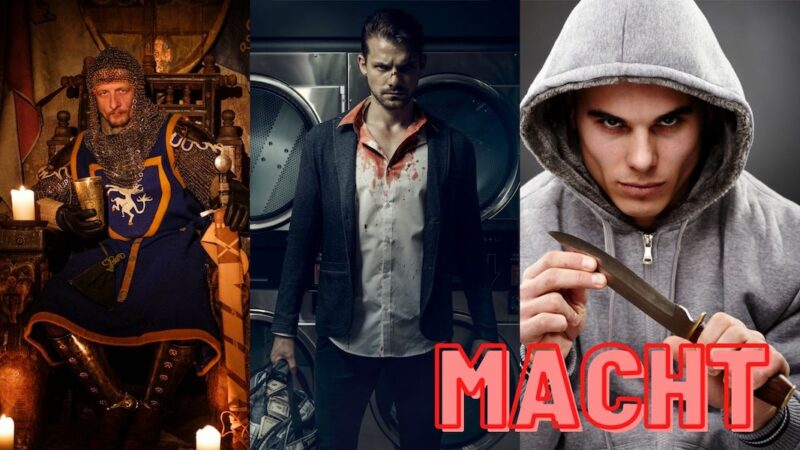
2. the red meme – urge for power & superiority
The red meme represents a stage of development in Spiral Dynamics that is characterized by a clear focus on personal power, dominance and immediacy. This meme is characterized by impulsive, energetic actions. Some key features of the red meme are:
-
Power and control:
The central motif of the red meme is the desire for power and control. Individuals who are characterized by this meme strive to dominate their environment and establish their personal authority. -
Impulsiveness and the present:
Long-term planning is not the focus. The red meme is impulsive and acts in the here and now. It seeks immediate gratification and rejects lengthy considerations. -
Struggle and superiority:
The red meme is characterized by strong competition for rank, position and influence. The urge to be the winner drives individual actions. The enemy must be flattened. -
Hedonism:
Pleasure and the pursuit of personal enjoyment are fundamental driving forces. The red meme seeks instant gratification and rejects restrictions in favor of hedonism. -
Authority and hierarchy:
Clear hierarchies and authority are acceptable as long as they do not threaten personal power. Individuals with a red meme strive to be at the top of the hierarchy themselves. This position is reinforced by severely punishing subordinates who fail to comply.
The red meme represents an important developmental stage in human consciousness and shows how the urge for power and dominance is expressed as a basic survival mechanism in different contexts.

Characteristics of a company with a dominant red meme:
-
Hierarchical structures:
Clear command structures in the company. Those at the top never have to justify themselves to those at the bottom. Those who do not follow orders are punished. -
Demonstration of power:
Emphasis on power and dominance as essential elements of leadership. Decisions are not substantiated. They are taken because you can. -
Power struggles:
The corporate culture is characterized by elbow fights and political tactics. -
Individual positioning:
Focus on pleasing the powerful, becoming visible to people with influence and pushing others out of the field. -
Clear chains of command:
Clear chains of command, the demand for obedience and punishments if orders are disobeyed. -
Quick decisions by the powerful:
Emphasis on quick, decisive decisions. -
Incentives:
Incentives are often distributed arbitrarily according to the landlord principle. -
Symbolic power:
Symbols of power (title, status symbols, number of employees) are particularly important. -
Challenges and risks:
Emphasis on challenges and willingness to take risks. -
The dictator:
Leader as a charismatic man of power who is admired and feared.
Environments for the red meme:
-
Start-ups with unclear structures
-
Power-centered organizations in aggressive markets
-
Mafia-like structures such as motorcycle gangs or criminal organizations
-
Areas with structural sales
-
Corporate or divisional restructuring before the new responsibilities are clear
-
Companies with authoritarian and arbitrary management
-
Many production sites in developing countries

Leadership personality according to the red meme
Persona: Richy Rot
Richy Rot likes to call himself a self-made millionaire: in a short space of time, he has set up an online company in which he explains to young men how they can become successful alpha males: by simply asserting themselves and proving that they are real men. If only they do what he says. He has also set up a sales organization for nutritional supplements. To show that he’s the boss in chief, he likes to post photos of himself sitting pensively in his private jet, holding the keys to his Lamborghini or chilling on his yacht with numerous bikini beauties. Just as Putin wanted to demonstrate his power with his naked upper body, Richie also likes to show off his arm muscles. Richie is not short on wisdom and is bursting with self-confidence. He is always surrounded by his black-clad, equally muscle-bound buddies; women are rare and when they are in swimwear. There is no doubt who is the boss here.
But even if he always wants to be the best, he also has his idols: mostly men who have made it. He can recognize their authority.
The company is booming, no question about it. Richie concentrated on making a lot of money quickly. In general, he is more interested in spontaneously setting things up than pursuing long-term goals. The motto is: “Act before the competition does!”
What Richy Red likes
Richy Rot likes challenges. For example, to sweep the unloved competitor out of the market. And to talk about it, of course. What use are power, money and influence if nobody sees them?
No can do, no can do. His focus? Being the biggest, power and control. He makes a point of not letting anyone, really anyone, tell him what to do. After all, he makes the rules. What does not apply to him are rules of fairness and sometimes also tax regulations. A man just goes his own way; all the little things would only slow him down in the end. It is extremely important to him to be able to design and work freely. He values loyalty in his employees. They should also be strong and assertive. As long as he is stronger…
What Richy Rot doesn’t like
As much as he likes being the boss and making clear announcements, the idea of being patronized and controlled by others annoys him. He doesn’t like that at all. Not even if his authority is called into question. He bypasses trade unions, organizations or regulations that restrict him and prevent him from directly implementing his ideas if he cannot eliminate them directly. He despises weakness and inferiority. Empathy is not necessarily his strongest quality. When one of his employees reports that he is constantly tired as a young father, he snorts contemptuously and changes the subject. Richy is very active; he never stands still or gets bored.
What employees can expect from Richy Rot:
Richie Rot goes the extra mile. And of course he expects the same from the people in his company. He is a strong boss with high expectations: Loyalty and an irrepressible level of commitment are his currencies. He supports those who are loyal to him to the best of his ability. His communication is so immediate and direct that it can also hurt. Those who meet expectations, get sales humming and successfully master their challenges are rewarded with recognition and appreciation and are often celebrated with champagne. Or as Richy says: “Work hard, play hard!”
For which he is sometimes feared:
Leadership personality Richy Rot pulls through until he gets what he wants. And ruthlessly so. The people in his team admire this, but are also always a little afraid of him and are intimidated when dealing with him. You never know how he will react. He is quite impulsive, sometimes even aggressive, and wants to dominate every situation. He does not tolerate mistakes or resistance, he reacts harshly. Because he occasionally bends the rules of the game in his favor, he is feared and respected. He knows the right people who owe him a favor in an emergency. He achieves his goals; no question about it. And even if he mostly just pursues his own ideas, he impresses and motivates some people with his determined charisma.
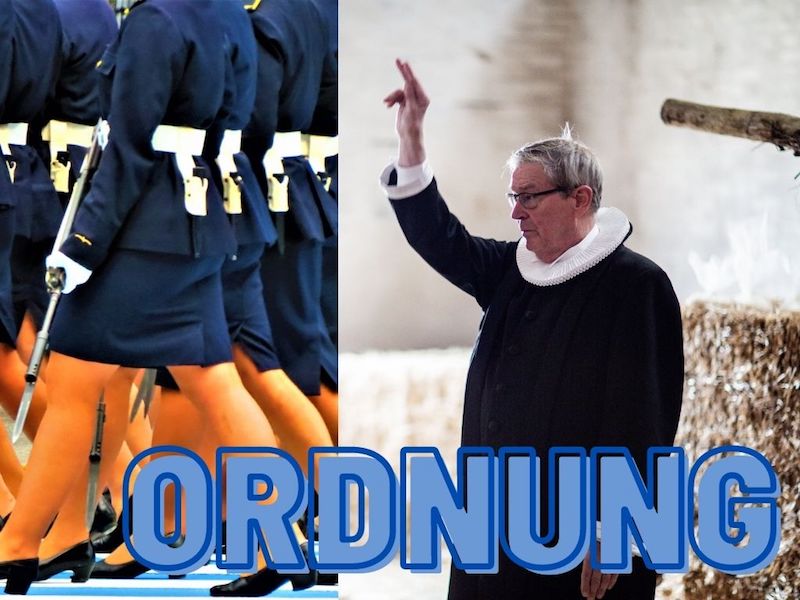
3. the blue meme according to Spiral Dynamics – safety in rules & morals
The blue meme, as the fourth stage in the developmental sequence of Graves’ theory and a milestone in the Spiral Dynamics model, is characterized by a focus on order, hierarchy and rules. This value system often arises as a reaction to the perceived chaos of the red meme and emphasizes the need for structure and stability.
-
Order and hierarchy:
Emphasis on clear structures, hierarchies and rules for an orderly society. -
Obedience and fulfillment of duty:
Respect for authority and following orders and instructions as a guideline for behavior and decisions. -
Loyalty:
There is a belief that obedience today will be rewarded in the future. Therefore, instructions and rules are not questioned. -
Morals and ethics:
Firmly anchored moral and ethical principles as a basis for individual and collective action. -
Dealing with errors:
There is a very clear right and wrong. Misconduct has consequences. Flexibility is not appropriate.
The blue meme manifests itself in a rigid adherence to rules, regulations, hierarchies and moral principles, which leads to a stable and rule-governed society.

Characteristics of a company with a dominant blue meme:
-
Strict structures:
Clear, formal organizational structures and hierarchies. -
Regulatory compliance:
High emphasis on rules, order and control. -
Processes:
Focus on comprehensively described procedures and processes and compliance with them -
Planning:
Detailed long-term planning and precise adherence to this planning -
Clear work instructions:
Precisely defined roles and clear work instructions. -
Decision-making hierarchies:
Decisions are made hierarchically and delegated. -
Bureaucratic processes:
Emphasis on bureaucratic processes and formalities. -
Conservative corporate culture:
Obedience and discipline are important values in the company
Environments for the blue meme:
-
Traditional banks, insurance companies and financial institutions
-
Conservative industrial companies with clear structures
-
Traditional educational institutions with fixed hierarchies
-
Authorities and administrations with a bureaucratic structure
-
Religious organizations with clear rules and structures
-
Traditional large corporations and large companies with established processes
-
Conservative family businesses that have grown over many generations
-
State institutions with rule of law principles
-
Established, hierarchically managed companies
-
Organizations with a strong compliance culture
-
Law firms and judicial institutions
-
Companies in the healthcare sector

Leadership personality according to the blue meme
Persona: Birgit Blau
When they say “order is half the battle” – Birgit doesn’t think that’s enough. She likes things to be clean and organized. She can already say where she will be going on vacation in two years’ time: Where she has been going for the last ten years. Her private life is also well-paced. The same ritual is repeated every week and yet she has been writing it in her calendar for years. She is certain: without things being clearly organized and everyone knowing exactly what they have to do and when, things will go wrong! Birgit is the head of an accounting department in an insurance group. She knows all the rules, processes and compliance requirements by heart and has the finances under control. And she is also precise when it comes to cents. And to ensure that this is also the case with her employees, she likes to check that everything is really correct. If not, it will take the appropriate steps without any ifs or buts. Everything is precisely regulated.
What Birgit Blau likes
Everyone knows the rules. Birgit made sure of that. It is therefore not too much to ask if these are to be adhered to. That is Birgit’s understanding of professionalism. If everything runs smoothly and everyone does what they are supposed to do in their place, that is the pinnacle of good organization for them. For them, justice is like a golden thread that springs directly from the principles and rules of the organization. Otherwise, she values expertise.
What Birgit doesn’t like blue
Birgit Blau dislikes anything that could turn her orderly world into chaos. Unreliability and planning chaos are like dark clouds on the horizon for them. Errors or deviations from the specifications are undesirable disruptions that have unforeseeable consequences.
She believes that new, creative approaches are not necessarily needed. What for? It has also worked in the past. Employees who have an overly lax view of punctuality, order and adherence to rules are a source of unrest and therefore a thorn in her side. Dislike.
What employees can expect from her
Rules, laws, house rules and, on top of that, clearly formulated work instructions. That’s what Birgit offers. Orally and sometimes also in writing. Of course, all of this should be put into practice immediately and without grumbling. But anyone who breaks the rules or causes chaos and disorder must expect Birgit to follow up with clear consequences. It is important to her that her organization runs correctly and in accordance with the rules, that there are no mistakes. And she also pays attention to the details.
Few questions remain unanswered in Birgit’s team: what is right or wrong, Birgit provides unmistakable orientation. This ensures security among employees: Everyone knows where they stand.
What she is sometimes feared for
Come what may, Birgit blau has her own idea of how things should be and she sticks to this order. Questioning the rules is not an option. Employees who do not get on with the structures or are so bold as to introduce new ideas are met with a lack of understanding. That’s why she comes across as cool and distant to some people. Sometimes it is, because it does not accept new approaches or different perspectives. Flexible adaptation of existing regulations just because the customer needs something different? That’s not possible. Some employees find them inflexible or even stubborn. And yes, that’s true.

4. the orange meme according to Spiral Dynamics – success & material freedom
The orange meme marks a transition from traditional values to individualistic and performance-oriented thinking. The focus here is on progress, personal success and material achievements.
-
Individualism and success:
Emphasis on personal freedom and success as a measure of quality of life. -
Innovation and competition:
Striving for progress, innovation and competitiveness on the market. -
Materialism:
Importance of material possessions and consumption as an expression of success and status. -
Flexibility and customization:
Willingness to change, adapt to new circumstances and seize opportunities. -
Performance orientation:
Individual performance and rewards as motivating factors.

Characteristics of a company with a dominant orange meme:
-
Innovation focus:
Continuous search for new ideas, technologies and processes to increase efficiency and achieve a competitive advantage -
Performance orientation:
Emphasizing and rewarding individual performance, goal achievement and personal success. -
Competitive orientation:
Strong focus on competition, market share and financial success. -
Entrepreneurial spirit:
Promoting entrepreneurial thinking and independent action among employees. -
Focus on results:
Focus on targets and their achievement, concrete results, measurable successes and performance indicators. -
Willingness to change:
Openness to change and continuous adaptation to market conditions. -
Career development:
Emphasis on individual career development and professional advancement. -
Incentivization:
Use of incentive systems, bonuses and recognition to encourage top performance. -
Customer focus:
High priority on customer satisfaction, product innovation and market adaptation.
Environments for the orange meme:
-
Technology company with a focus on innovation
-
Market-leading companies in the field of science and research
-
International corporations in global markets
-
Success-oriented trading companies
-
Research institutions with an entrepreneurial approach
-
Venture capital companies and investment banks
-
Innovation centers with a business focus
-
Companies in growth sectors with high competition
-
Global technology and media groups
-
Sales organizations with individual reward systems (e.g. high commission share)
-
Company with a strong performance-oriented culture
-
Financial services company with a market-oriented approach
-
Consulting firm with an entrepreneurial focus
-
E-commerce companies in dynamic markets

Leadership personality according to the orange meme
Persona: Oliver Orange
Oliver Orange is the founder king. As a child, his dream job was manager. During his studies, he founded a small company with a friend. He then joined a large management consultancy and worked as a manager in a global clothing group. And in the meantime, he continued to found the company. With his buddy, alone, with others. And all these companies are doing well. No wonder, because Oliver demonstrates entrepreneurial determination and is a master negotiator. He really has a golden touch and always has new ideas that pay off.
As he grew up in modest circumstances, he has always had to watch his money. Now that there is prosperity, everyone can see it. He lives with his wife in a villa on the outskirts of the city. Next to his spacious limousine is his wife’s convertible and a small sports car for driving fun at the weekend. His collection of expensive watches – like his three vintage cars – is both an investment and an expression of his success, which he has worked hard to achieve.
What Oliver likes
Oliver expects his employees to show commitment and performance. If you get stuck in and do your job quickly, you’ll be a hit with Oliver. He loves efficiency and wants to see quick results. But these should also be of a high quality, because he doesn’t mess around. His approach is straightforward. He communicates directly, sets clear goals and also expects them to be achieved without any major detours.
If anyone has an idea, Oliver listens to it. Who knows – it could be an important idea. Innovation is a decisive success factor for him. Oliver has his nose in everything that has to do with technology, AI, new apps and opportunities. That fascinates him; he sees the future there.
If someone performs well, they can expect recognition and financial rewards from Oliver. There are clear target agreements here. Everyone knows what they have to do to receive their bonus. Oliver thinks: If you perform well, you can show it off and celebrate your own success.
What Oliver Orange doesn’t like:
What Oliver can’t have at all is the inability to make decisions. Problems have to be tackled; no amount of egg dancing will help. Employees who just sit around and complain are not well received by Oliver. If you don’t like something, just make a better suggestion. It should only be efficient. He expects the same motivation from others as he has from himself; dawdling is not an option. Oliver wants his employees to be absolutely performance-oriented.
Just being there and doing the job by the book, sticking to all the rules – that’s not enough for Oliver. He expects the people in his team to contribute their own ideas and approach problems creatively.
What he also doesn’t like: turning long talk into action without words. In his perception, this is a waste of time and a lack of focus.
What employees can expect from him:
Oliver Orange has clear instructions and goals. And Oliver provides his employees with all the resources they need and supports them wherever he can so that the work can be done quickly and effectively. He expects independent, autonomous work. It also rewards performance.
For which he is sometimes feared:
Although Oliver Orange communicates extremely directly, he often fails to strike the right note. On the contrary: he demands a lot and sometimes seems very tough. It gets even worse if things don’t go the way he wants; for example, if results are not available quickly enough or if there is lax tinkering. Employees are afraid of the cold wind that blows then, which is why many keep a low profile to be on the safe side.
And you can’t fool him: He sees exactly where work is being done ineffectively and is not squeamish about taking the necessary measures immediately. He doesn’t accept any excuses. Weakness has no place here. Employees are often worried about their position.

5 The green meme according to Spiral Dynamics – social justice
The green meme reflects a shift towards community values, social justice and environmental awareness. The focus here is on cooperation, diversity and the pursuit of a harmonious world.
-
Community and cooperation:
Emphasis on teamwork, consensus-building and collaborative action. -
Social justice:
Striving for fairness, equality and social responsibility. -
Diversity and tolerance:
Acceptance of different lifestyles, cultures and opinions. -
Environmental awareness:
Sensitivity to ecological issues and lifestyles that benefit all countries in the world. -
Holistic thinking:
Focus on the well-being of the community and the pursuit of inner peace.

Characteristics of a company with a dominant green meme:
-
Collaboration and participation:
Focus on collaborative decision-making and participatory processes. -
Social responsibility:
High emphasis on social responsibility, equal rights and support for the weaker members of society -
Diversity and inclusion:
Promoting diversity, inclusion and valuing individual opinions. -
Shared values:
Emphasizing shared values and ethics as a basis for corporate decisions. -
Team orientation:
Cooperation and teamwork are at the heart of our corporate culture. -
Partnership-based leadership:
Flat hierarchies, lateral leadership and leadership styles based on partnership. -
Open communication:
Open and transparent communication at all levels of the company. -
Employee development:
Focus on the personal and professional development of employees. -
Holistic thinking:
Emphasis on holistic thinking and consideration of long-term effects.
Environments for the green meme:
-
Social enterprises with a focus on the common good or sustainability
-
NGOs and aid organizations with humanitarian goals
-
Community-oriented educational institutions
-
Business cooperatives with a participatory approach
-
Organizations with a strong focus on diversity and inclusion
-
Cultural institutions with a social mission
-
More modern corporate cultures with a strong focus on teamwork
-
Organizations with a participative management approach
-
Start-ups with a social impact
-
Fair trade companies and organic producers
-
Feminist start-ups
-
Community banks with social principles
-
Corporate networks for social exchange
-
Sales organizations with top regulations and other team-oriented incentive systems

Leadership personality according to the green meme
Persona: Gundula Grün
Gundula likes eye level. Their aim is to make the world a little better and fairer. And it starts in the workplace. Gundula manages a medium-sized production and distribution company with organic products. Fairness is important to her. Gender pay gap? Not with Gundula. Gundula supports women and values a diverse team. She works in a team-oriented manner, there are frequent meetings. They can sometimes take quite a long time. Because consensus decisions are her favorite thing. She has no desire to act like the boss and go through with her decision. She wants everyone to feel heard and to find the best solution together. This is not always easy. Especially when it comes to quick decisions. It just takes time for everyone to add their two cents.
In return, organic fruit and fair trade tea from our own production are available free of charge during the sometimes seemingly endless rounds of talks.
What Gundula likes:
“The best solutions are created in a team” – that is Gundula’s guiding principle.
She is interested in her employees, enjoys listening to their stories and responds to their needs. She appreciates that everyone brings their own qualities and characteristics to the table. She likes team events, going out to eat together, being on first-name terms with everyone and talking openly about her emotions. She likes to walk through the production area and check that everyone is doing well.
She enjoys working with others.
What Gundula doesn’t like:
Competition and hierarchy? – No, thank you! Why work against each other when you are much better together? When Gundula discovers that someone is acting selfishly, trying to gain advantages for themselves at the expense of the community, she gets angry. She expects the team members to look out for each other and show consideration. Gundula keeps a close eye on ensuring that no one is favored or disadvantaged.
What employees can expect from her:
No matter what happens, Gundula remains fair. There are no secret backroom deals; it is important to Gudula that there is transparency. She spends a lot of time and energy ensuring that the team works well. Employees can count on consideration and helpfulness. And as long as the harmonious coexistence is not jeopardized, Gundula is in favour of open communication and listening to every voice.
If there are any difficulties, Gundula has a sympathetic ear.
For which it is sometimes criticized:
Gundula Grün is occasionally criticized for her leisurely approach and reserved decision-making. Some decisions take forever because they are preceded by long discussions. Finding a consensus is not easy. And unfortunately, the real work remains undone. In a world characterized by constant change and the need to react quickly, many people find this way of working too slow. You shouldn’t expect clear announcements from Gundula.
Employees who are more individualistic sometimes feel suffocated by peer pressure.
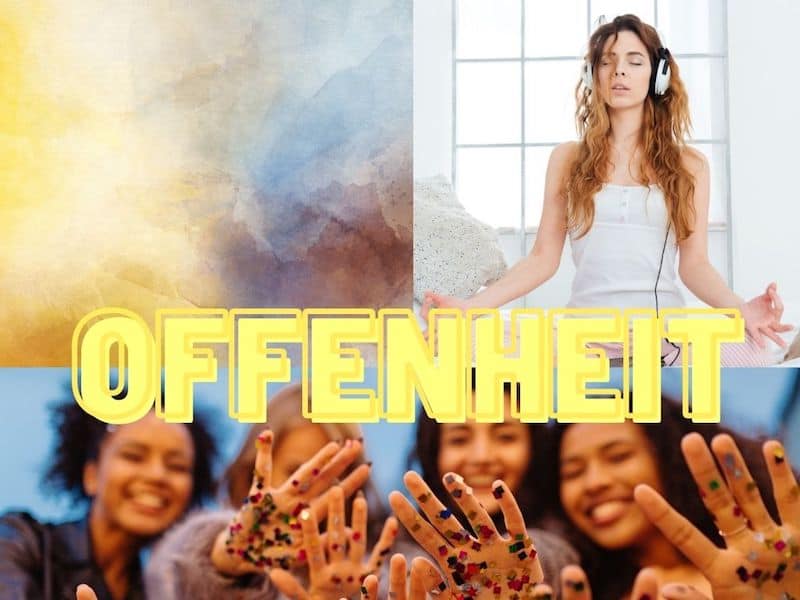
6 The yellow meme according to Spiral Dynamics – flexible and innovative
The yellow meme represents an evolutionary way of thinking that is characterized by flexibility, holistic thinking and the ability to integrate. The focus here is on adaptability to complex challenges and the integration of different perspectives.
-
Flexible thinking:
Ability to adapt to different situations and use a variety of solutions. -
Holistic integration:
Bringing together knowledge from different sources and disciplines. -
Systemic understanding:
Observation of interrelationships and the ability to recognize patterns in complex systems. -
Self-organization:
Personal responsibility and the ability to organize oneself. -
Evolutionary perspective:
Focus on continuous development, learning and adaptation.

Characteristics of a company with a dominant yellow meme:
-
Holistic thinking:
Emphasis on networking, systems thinking and understanding complex interrelationships. -
Learning orientation:
Promoting a learning organization in which knowledge and experience are shared. -
Flexibility and customization:
Willingness to continuously adapt to changing circumstances and challenges. Flexible structures that can change depending on the challenge. -
Culture of innovation:
Creative working environment that encourages new ideas and approaches. Use of creative methods such as design thinking -
Personal responsibility and self-organization:
Promoting personal responsibility and self-management among employees. Self-organized structures such as Scrum (a framework for agile project management) -
Participation:
Involving employees in decision-making processes and strategic planning. -
Value orientation:
Strong value base that serves as a guideline for corporate decisions. -
Agile methods:
Application of agile methods and ways of working to promote flexibility. -
Servant Leadership:
Managers act as mentors and supporters, promote the personal development and decisions of their employees and remove obstacles. -
Cooperation and networks:
Emphasizing cooperation and building networks to create synergies.
Environments for the yellow meme
-
Innovation centers for research and development
-
Startups and modern software development companies
-
Consulting firm for systemic organizational development
-
Integral educational institutions with a systemic curriculum
-
Companies with agile organizational structures
-
Companies or divisions with holocratic structures
-
Global corporations with a networked organizational structure
-
Innovation cluster with comprehensive cooperation
-
Knowledge management organizations
-
Organizations with a culture that promotes learning
-
Future-oriented think tanks with systemic thinking

Leadership personality according to the yellow meme
Persona: Gero Gelb
Gero gelb and a fellow student have founded a start-up that develops complex apps. The two founders and the entire crew are highly motivated. In a world that continues to change rapidly and is therefore completely unpredictable, Gero’s basic concern is to find the optimum solution for every situation. His company is very diverse, because he gets better solutions through different perspectives and synergies. In Gero’s company, it is completely normal to work from India or Canada. He is incredibly well connected in his private and business life; his contacts are extremely diverse, but not particularly deep. As a manager, he sees himself more as someone who removes obstacles than as someone who tells you where to go. He trusts the teams and is firmly convinced that he does not know better than those who are close to the customer or fully immersed in the subject matter.
What he appreciates or loves:
Gero gelb is all about the result: what counts is the best solution to a problem. He doesn’t care whether the specialist with 30 years of professional experience or the trainee contributes this. He is open to a wide range of solutions and perspectives and is not influenced by hierarchies. His motto in life: don’t stand still! For him, this means lifelong learning and constantly networking with new contacts. This is his strategy for dealing with the constant changes in the
> VUCA
world. It is flexible so that it can adapt to changes. Because he values new experiences and perspectives and knows how he can benefit from them.
What he rejects or doesn’t like:
Gero Gelb believes that rules for the sake of rules are completely pointless. Hierarchies and positions as well. For him, they simply restrict freedom of thought, development and self-determination. What he can’t have is someone trying to cobble together new problems using old school methods and completely outdated solutions. It makes no sense at all for him to hold on to the old. Gero prefers to point out that complex interrelationships must first be considered and integrated in order to find the best solutions. But not everyone is prepared to do this. This irritates Gero.
What employees can expect from him:
Gero doesn’t care what seniority or rank someone has in the company: Competence is competence and that is what Gero values. As the world does not stop in its development, he encourages his employees to acquire more and more skills, knowledge and perspectives. He supports concepts such as Innovation Friday, when every employee is freed up from day-to-day business and has time to focus on implementing new ideas. Because his network extends all over the world, he is open to cooperation. He lives the values he represents very strongly and employees can rely on him in this respect.
For which he is sometimes feared:
While others are still reacting, Gero is often already on to the next problem or another of his many projects. He usually has quite a few pots on the stove. It is important to him to react immediately to new situations and circumstances. This often makes him seem impatient, sometimes even erratic. They are not always empathetic and often don’t have the time or the intuition to understand what employees need. He also likes to take high risks. The people in the company are sometimes irritated by his behavior, sometimes his behavior even frightens them.
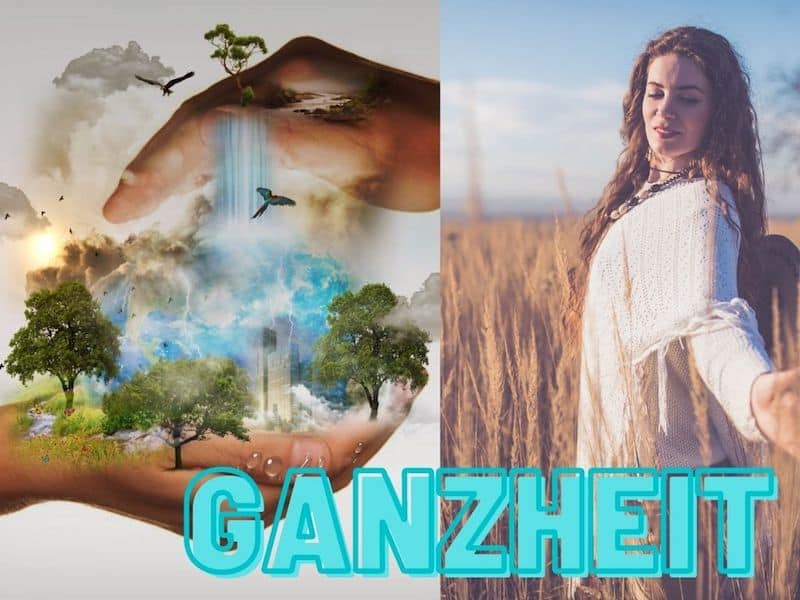
7 The turquoise meme according to Spiral Dynamics – sustainability & responsibility
The turquoise meme represents a holistic way of thinking that is characterized by maximum complexity and an acceptance of responsibility for the effects of human action on the entire planet and future generations.
-
Global awareness:
Comprehensive understanding and empathy for global challenges and interrelationships -
Responsibility:
Making decisions taking into account the consequences for the survival of the world, all living beings and future generations -
Ethics and compassion:
Prioritizing ethics, sustainability and compassion in decision-making processes. -
Complex systems:
Ability to understand highly complex systems and develop holistic solutions. -
Holistic development:
Striving for individual and collective development at all levels.

Characteristics of a company with a dominant turquoise meme:
-
Holistic meaningfulness:
Focus on a higher purpose and understanding the company’s activities in a wider context. -
Collective intelligence:
Using collective intelligence to find innovative solutions to complex challenges. -
Economy for the common good:
Consideration of ESG-oriented key figures (environmental, social, governance) in decision-making processes and accounting -
Holistic employee development:
Focus on the personal development, well-being and fulfillment of employees. -
Sustainability and responsibility:
Strong sense of responsibility for ecological and social issues. -
Holacracy and integral management:
Application of holocratic approaches and integral management for effective decision-making.
Environments for the turquoise meme
-
Global organizations for peace and sustainability or social innovation
-
Ecologically sustainable companies with a global vision
-
Future-oriented technology companies with an ethical focus
-
Communities for holistic personal development
-
Companies with holocratic structures
-
Self-development company with an integral focus
-
Management consultancies for holistic transformation
-
Organizations for intercultural exchange
-
Companies with global responsibility concepts

Leadership personality according to the turquoise meme
Persona: Tina Türkis
Tina Türkis is very pleased to be able to manage an up-and-coming company for sustainable technologies. Her values of sustainability and the common good are so important to her that she wouldn’t see herself in most companies anyway. As a manager, she acts creatively: she uses innovative ideas and pragmatic solutions to realize her visions.
What she appreciates or loves:
Tina Türkis wants to make a difference! She believes that her company should initiate positive changes in society and the environment. It ensures that the company is committed to the common good and long-term sustainability. Of course, this also means dealing well with everyone in and around the company, with society. Corruption and self-interest are out of the question with Tina: she is integrity personified and ensures transparency, leaving no room for haggling. The corporate culture in Tina’s organization is based on fairness and sustainability.
What she rejects or doesn’t like:
Gaining short-term advantages, ego trips at the expense of others, overexploiting resources and lining her own pockets make Tina angry. “The world won’t get any better that way!” She wants to work with people she can trust. She rejects authoritarian leadership styles, command and control and hierarchies. Tina actively campaigns against prejudice and discrimination by promoting diversity and inclusion.
What employees can expect from her:
Tina Türkis is interested in the ideas, perspectives and criticism of her employees: She ensures that there is a participative culture and atmosphere of openness so that everyone can express themselves. It also supports the people in your company in their professional and personal development. She always has an eye and an ear open to what resources and support her employees need to work successfully and then makes them available. It makes decisions with a focus on sustainability and always emphasizes the company’s responsibility for the world, for social aspects and for future generations.
For which it is sometimes feared:
Tina Türkis’ visions sometimes stretch the imagination of those around her; some ideas seem too radical. Then Tina seems too idealistic, unworldly and lacking in practical relevance. Tina’s management approach is participative, i.e. everyone involved is heard. Some would like to see clearer and faster decisions. Others are concerned that sustainability and the common good could jeopardize the company’s profitability.
The 7 leadership personalities and the value systems
At this point, we would like to remind you once again that the leaders discussed are personae, i.e. fictitious personalities in which a meme predominates. We use the exclusivity and clarity with which a persona represents the values of the respective meme for orientation. In this way, we want to look at the force fields that are effective through the dominance of value systems in individuals and companies.

Conflicts between leadership personalities and value systems
If it is important to one leader to always be on the winning side and another’s top priority is the well-being of the team, then conflicts are inevitable. After all, everyone here pursues different goals.
Of course, the combination of seven leadership personalities gives rise to many opportunities for conflict. We have selected three combinations with possible conflict potential from almost 50 meme combinations:
Conflict potential orange meme and turquoise meme
When multi-manager Oliver Orange meets the lively bundle of energy Tina Türkis, the result is a mixture of different interests and perspectives. Oliver, who focuses on efficiency and clear results, meets Tina, who can barely hide her passion for long-term sustainability and projects for the common good.
Conflict of interest:
Oliver, a leader who focuses on quick successes, may initially be annoyed by the apparent slowness of Tina’s approach. He will also find it unworldly to forego profit in favor of sustainability and ethical considerations. And Tina could be irritated by his focus on profits. His drive for immediate results could be at odds with Tina’s vision, which allows time for sustainable development and long-term change.
Possible conflict resolution:
However, the two could recognize that their different approaches do not necessarily have to be in conflict. Oliver could benefit from Tina’s foresight and learn how sustainable practices can lead to stable success in the long term. Tina, in turn, could learn from Oliver’s pragmatic approach and view of finances how to put efficiency and results at the service of long-term goals.
Common opportunities:
In the midst of their differences, Oliver and Tina may realize that their strengths complement each other. They could form a powerful alliance in which Oliver’s efficiency helps to realize Tina’s vision more quickly. By creatively combining Oliver’s practical thinking and Tina’s innovative spirit, they could realize projects that are not only sustainable but also effective.

Conflict potential yellow meme and blue meme
When leadership personality Gero Gelb, who focuses on flexibility and innovative solutions, meets the structured and rule-based Birgit Blau, interesting dynamics arise between the different interests and perspectives.
Conflict of interest:
Gero, who appreciates change and adaptability, might initially feel thwarted by the apparent rigidity of Birgit’s approach. Change, new things and not following the rules could really throw Birgit off her stride. Gero’s drive for constant innovation could be at odds with Birgit’s focus on tried-and-tested processes and clear structures.
Possible conflict resolution:
Here, too, the opposites do not have to lead to conflict. Gero could benefit from Birgit’s stability and learn how clear structures can provide a solid foundation for successful innovation. Birgit, in turn, could learn from Gero’s innovative spirit how to react flexibly to changing circumstances without compromising efficiency.
Common opportunities:
Despite the opposing attitudes, there are many opportunities to complement each other. They could form a creative symbiosis in which Gero’s creative approach is supported by Birgit’s structured thinking. By skillfully combining Gero’s innovative spirit and Birgit’s stability, they could create projects that are both innovative and reliable.

Conflict potential red meme and green meme
When leader Gundula Grün, with her straightforward focus on fairness and cooperation, meets the strong-willed Richy Rot, whose aim is to dominate and win, two different value systems collide. This results in exciting dynamics.
Conflict of interest:
Gundula Grün could be dismayed by Richy Rot’s dominance.
Rich Rot might be irritated by Gundula’s emphasis on fairness and team orientation. His striving and power-oriented approach could be at odds with Gundula’s efforts to create an equal and cooperative working environment.
Possible conflict resolution:
Maybe Richy and Gundula will find out that their different values don’t necessarily mean trouble.
Richy may understand that teamwork and fairness can have a positive effect on productivity, while Gundula may appreciate how Richy’s determination can help achieve goals.
Common opportunities:
Even though their leadership personalities and perspectives are more than different, Richy and Gundula could learn from each other: Richy’s leadership could improve the implementation of Gundula’s principles, while Gundula’s focus on collaboration could help create a work environment characterized by loyalty and commitment. The combination of their approaches could lead to a balanced leadership dynamic that promotes both efficiency and a positive working atmosphere.
What kind of leader are you?
Perhaps you are now asking yourself where you would position yourself in terms of values, what kind of leader you are. And which values prevail in your company. First of all, it should be emphasized once again that each of us is a mixed type of value and cannot simply be sorted into one of the seven value categories. The combination of our values can be quite complex.
It’s worth looking into this: if you become aware of the forces that drive you and your employees, you can have a positive influence on them.
How do you find out what kind of leader you are?
But how do you find out where you stand in terms of values, which values are the driving forces in your company? Well, that’s actually relatively easy!
Based on Graves’ work, we have developed a method (Value Party) and several tools to help you and your team get answers quickly and easily.
The app
The quickest and easiest way to create your value profile is with the ValueParty app.
The card game
Do you prefer the analog version? No problem. We have. This allows you to sort out for yourself which values are closer to you than others. However, it will be particularly exciting to work out a value profile with the whole team.
Here are the details of the card game.
The workshop on site or online
We come to you and support you on the topic of values in your company.
And online is of course also possible. That’s clear.
Reading Leadership personality and values
Would you like to learn a little more about leadership personality and values? Wonderful! – We have already written many articles on this subject.
And not only that!
In April 24 our book
Values-based transformation in 10 steps
will be published by F.A.Z. Verlag.
Here in the video we talk about our book.
Values-based transformation in 10 steps
will be published by F.A.Z. Verlag.
Here in the video we talk about our book.
